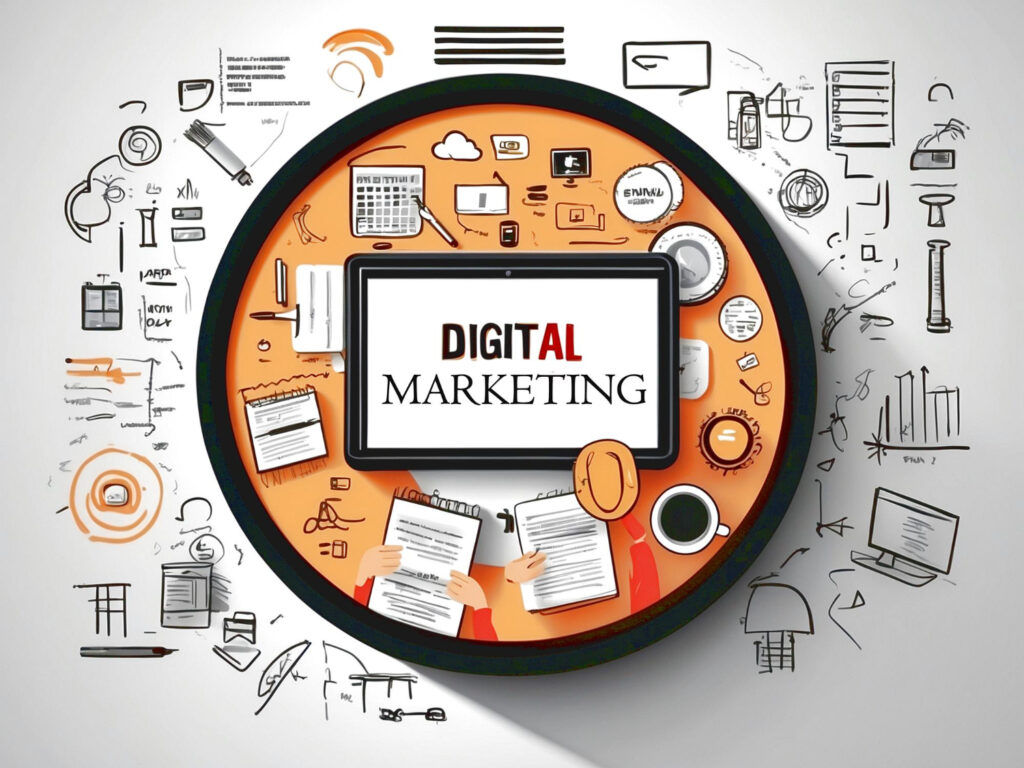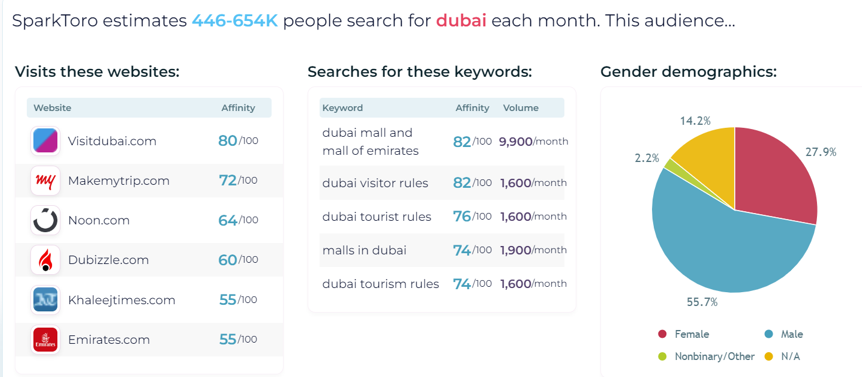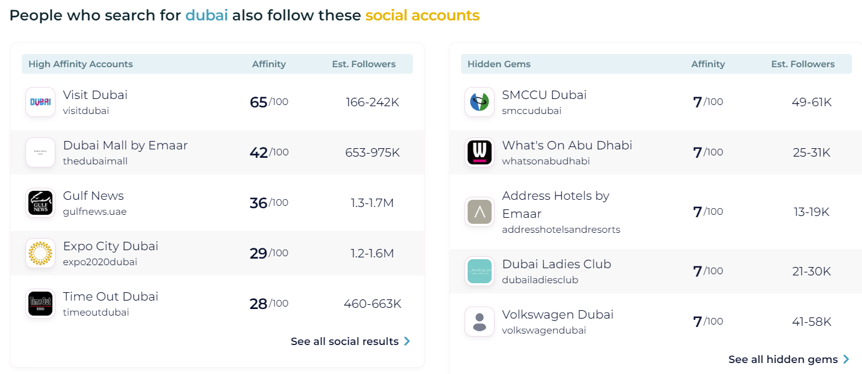

Last updated on

This year has brought significant disruptions to the digital marketing landscape.
Currently, the industry is grappling with the integration of generative AI and its anticipated influence on user behavior and search patterns, amidst the continuous updates from Google.
SEO strategies are evolving, and the industry is navigating these changes while acknowledging the prevailing uncertainties.
However, amidst these challenges, there are substantial opportunities for those who can adapt and embrace the emerging trends.
To support marketers and brands in thriving amidst uncertainty, I’ve identified key trends to focus on. Guided by strategic insights and inspired by Yogi Berra’s timeless wisdom, “Predictions are hard, especially about the future,” digital marketers can undoubtedly relate to the challenge of anticipating what lies ahead. Here are the top 10 digital marketing trends for 2024:
Why is ‘strategy’ the predominant trend this year rather than the latest technology? As Yogi once quipped, ‘If you don’t know where you are going, you might wind up someplace else.’
According to Spencer Stuart’s 2024 CMO Tenure Study, the average tenure of chief marketing officers (CMOs) at Fortune 500 companies was 4.2 years in 2023. The study also revealed that CMOs at B2B companies averaged 4.5 years, while those at B2C companies averaged 4.0 years. For the top 100 advertisers heavily focused on consumers, the average tenure plummeted to just 3.1 years.
Thus, crafting a robust digital marketing strategy capable of delivering superior results within a few years is crucial for CMOs aiming to secure longevity in prominent brands.
While staying abreast of the latest technologies remains essential, mastering the art and science of developing digital marketing strategies that drive tangible business outcomes is paramount. Merely relying on technology alone won’t suffice for digital marketing leaders and executives striving to navigate their organizations toward their desired destinations.
Yogi also famously remarked, “Predictions are hard, especially about the future.” Therefore, it’s natural to be curious about what generative AI tools foresee for themselves.
OpenAI’s ChatGPT 3.5 predicts:
“AI and machine learning have been reshaping digital marketing for years, and 2024 is set to see these technologies become even more pivotal. From chatbots and predictive analytics to personalized content and targeted advertising, AI will elevate customer experiences and drive operational efficiency. Brands embracing AI can anticipate enhanced ROI and deeper customer insights.”
Google’s Gemini (formerly Bard) states:
“AI is no longer science fiction. It’s at the forefront, from crafting highly converting chatbots to refining campaigns with precision. Embrace, rather than fear, the rise of AI!”
Anthropic’s Claude 3 adds:
“AI writing assistants like Claude have already made significant impacts, and 2024 will witness their widespread adoption in content marketing. These tools will facilitate scaling content creation while preserving quality.”
However, AI cannot envision your organization’s overarching strategy. It lacks empathy and creativity, qualities essential for effective human leadership. Therefore, AI relies on your guidance to operate effectively.
Some pundits proclaim the death of SEO. Yet, as Yogi famously said, “It ain’t over till it’s over.”
SEO professionals possess a unique skill: the agility to adapt swiftly to constant changes and new information. This often involves recalibrating strategies in response to the latest updates in Google’s algorithms, including recent insights from the leaked Google API.
Rand Fishkin and Mike King were the initial reporters of these leaked documents. While Google has confirmed the authenticity of these internal files, it advises against drawing hasty conclusions solely based on them.
What steps should savvy SEO professionals take?
I’ve known Fishkin for over two decades, and he embodies the expertise, authority, and trustworthiness (E-A-T) that are crucial in SEO.
Therefore, I’m inclined to adopt Fishkin’s advice, which includes:
I first identified this trend long ago and discussed it at SES London 2009 during a session titled “Beyond Linkbait: Obtaining Authoritative Mentions Online.”
During that time, I emphasized that link bait tactics could be successful “if you prioritize both the inherent quality and the creativity required to earn links from other websites.”
Additionally, I presented case studies demonstrating to British SEO professionals how to “engage with journalists, bloggers, and other authoritative figures to bolster your company’s online reputation, regardless of whether links are acquired.”
However, the concept of obtaining authoritative mentions without links didn’t quite resonate across the Atlantic. Some perceived it as unintentionally humorous, akin to saying, “Always attend others’ funerals; otherwise, they won’t attend yours.”
Fishkin’s recommendation, hopefully, will help many SEO professionals grasp the profound wisdom of complementing link building with public relations.
As he articulated at MozCon, “If you suddenly acquire a large number of links in a single day without any other engagement, you’ve essentially manipulated the link ecosystem. A true reputable brand should naturally attract discussions and mentions.”
It’s widely known that Google, Meta, and other paid media giants are integrating AI into their advertising platforms at an astonishing pace. Amidst this rapid development, it’s easy to dismiss it as mere background noise.
However, I’ve discerned the significant trend amidst the clamor. Today’s rush towards AI solutions mirrors the earlier fervor around programmatic solutions a decade ago. As Yogi Berra famously quipped, “It’s déjà vu all over again.”
This presents an opportunity for digital marketers and their agencies to swiftly adapt their “programmatic” workflows into “AI” best practices.
For instance, Google introduced a comprehensive five-step programmatic workflow five years ago.
Here are the steps:
Why does today’s automated buying and selling of digital media resemble this process? It’s because AI is fulfilling the original vision of programmatic advertising: engaging with consumers during critical moments.
However, there is a notable difference between then and now. As outlined below, today’s advancements include better integration between advertising platforms and analytics tools, allowing for more precise measurement of campaign impacts on brand awareness and lead generation.
Over a decade ago, performance marketers were early adopters in integrating their advertising platforms with analytics tools to assess the impact of their campaigns on “conversions.”
Conversely, brand marketers often overlooked detailed analytics, focusing primarily on measuring “brand awareness” through initial consumer exposures to display or video ads.
A significant shift occurred with the launch of Google Analytics 4 last summer. The introduction of a “Business objectives” collection replaced the previous “Life cycle” reports, now offering the capability to track objectives such as “Increase brand awareness.”
For instance, brand marketers can now utilize metrics like traffic acquisition, demographic insights, user engagement, and page/screen visits to gauge brand awareness in contexts less susceptible to ad fraud.
Another business objective now trackable is “Generate leads.”
Thus, digital marketers can measure various user actions that hold value for their organization, such as:
As Yogi famously noted, “You can observe a lot by watching.”
During the summer of 2020, the Content Marketing Institute and MarketingProfs conducted their annual survey, revealing that “Content marketers demonstrated resilience, tackling the challenges posed by the pandemic head-on.”
In response to the pandemic, both B2B and B2C marketers:
In essence, numerous content marketers completely revamped their approach to crafting a content marketing plan from start to finish.
For some, 2020 became a year of swiftly adapting their content marketing strategies, while for others, it marked the opportunity to establish one for the first time.
BrightEdge indicates that content marketers are now bracing for a “Searchquake,” a seismic change in the content marketing landscape driven by Google’s Search Generative Experiences (SGE).
Yet, content marketers are now clear on their course of action. As Yogi advised, “When you come to a fork in the road, take it.”
I lead an online course at the New Media Academy in Dubai titled “Influencer Marketing and AI.” While it may appear an unconventional pairing of topics, they tie closely to another course I teach on “Engaging Audiences through Content.”
I emphasize to my students the challenge of crafting exceptional content. This is why marketers often turn to influencers or AI to produce video content that resonates with their audience. However, they soon realize there’s more to the process.
For instance, AI can generate realistic and imaginative scenes based on textual instructions. Yet, AI lacks the innate creativity of humans. Therefore, at the core of every outstanding video lies innovative, unexpected creativity driven by human ingenuity.
I present to them “Air Head,” the debut short film by OpenAI Sora, produced by a Toronto-based production company.
Following this, I challenge them to apply their newfound knowledge by utilizing tools like Synthesia, Runway, or invideo AI to produce a short video for their final project.
Consistently, they find that AI video generators can produce realistic and imaginative scenes based on text instructions but lack the creative intuition seen in human creators, such as shy kids.
In the words of Yogi, “If you can’t imitate him, don’t copy him.”
According to the Influencer Marketing Hub, “Most marketers consider identifying and selecting the best, most relevant influencers to be the most challenging aspect of influencer marketing.”
Ironically, HypeAuditor provides an influencer discovery platform that allows marketers to search a database of 137.5 million influencers across Instagram, YouTube, TikTok, X (formerly Twitter), and Twitch.
The platform also allows marketers to apply filters to find ideal partners for their brand.
This paradox brings to mind Yogi’s remark, “Nobody goes there anymore. It’s too crowded.”
However, this perspective suggests that many marketers may be approaching influencer identification from the wrong angle. What should they consider instead?
In my “Influencer Marketing and AI” class, I teach students how to leverage SparkToro to obtain a complimentary report on the audience searching for “Dubai.”

According to SparkToro, between 446,000 to 654,000 individuals search for “Dubai” each month. The platform reveals the websites they frequent, the keywords they use, and their gender demographics.

Additionally, SparkToro identifies influential sources within this audience, highlighting both high-affinity accounts and hidden gems that marketers can strategically engage with.
I strongly adhere to the principle of “the rule of three.”
Therefore, it wasn’t surprising when I received an email from Jennifer Radke inviting me to join “an exciting webinar focused on a high-level exploration of using ChatGPT for social media.”
However, I was taken aback when Katie Delahaye Paine shared a link to new research from Asana’s Work Innovation Lab and Meltwater, revealing that “only 28% of marketing professionals have received adequate training on utilizing AI tools.”
Furthermore, I was dismayed when I came across Mark Ritson’s column in MarketingWeek, which argued, “AI excels at automating high-volume, short-term marketing tasks, potentially leading social media into a realm of synthetic content.”
Back in 2004, I had lunch with Chris Shipley when she first coined the term “social media.” I distinctly recall those days when social media held such promise for the future.
However, as Yogi famously said, “The future ain’t what it used to be.”
Today, social media marketers face three choices:
Some skeptics may question the unconventional lineup of the top 10 digital marketing trends for 2024. A few of my choices challenge conventional wisdom.
Recently, I revisited the movie Moneyball (2011). It reminded me how Billy Beane (played by Brad Pitt), the general manager of the Oakland Athletics, and his assistant Peter Brand (played by Jonah Hill), used sabermetrics to analyze players.
This sparked a realization: Selecting digital marketing trends is akin to playing Moneyball. To outperform competitors with larger budgets, you must uncover strategic insights, crucial data, tactical guidance, and digital marketing trends that traditional wisdom may overlook.
Where did I get the whimsical idea to pair each trend with one of Yogi’s memorable quotes? Was it inspiration or a flight of fancy?
Recently, I watched the documentary “It Ain’t Over” (2022) for the first time. It profiles Yogi Berra, the Hall of Fame catcher for the New York Yankees. The film affirmed Yogi’s assertion, “I really didn’t say everything I said.”
However, sportswriters continued attributing these Yogi-isms to him because these “concise pieces of wisdom … akin to good country songs … quickly cut to the truth,” as Allan Barra, an author on Yogi, explained.
This strategic insight led to this year’s human-authored update, in contrast to last year’s top 10 digital marketing trends curated by ChatGPT.
Original news from SearchEngineJournal